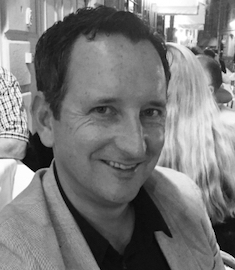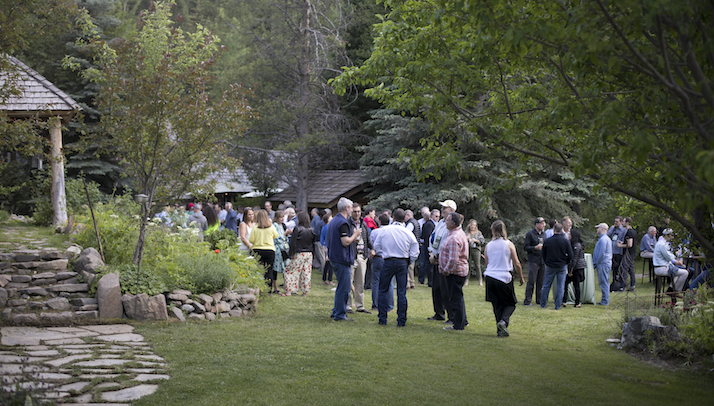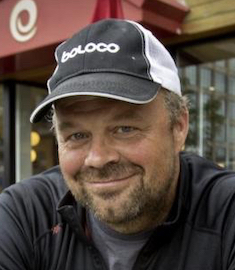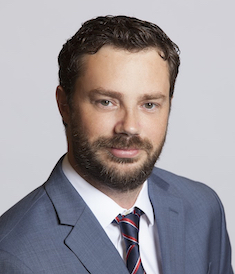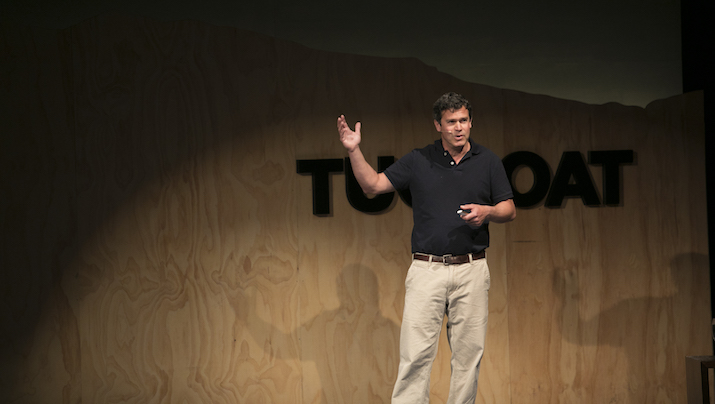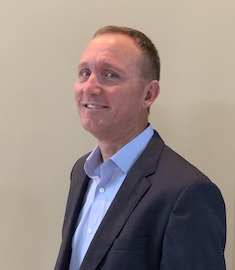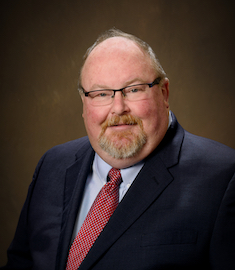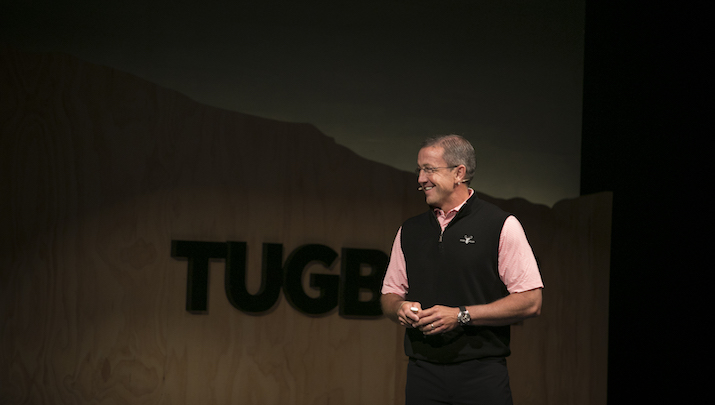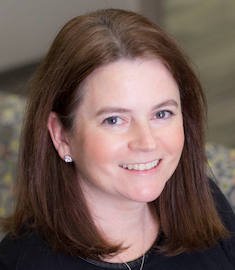How to Grow While Saying No
Joining a family business is not always an easy decision. When my father, Tom Larkin, and I initially discussed my working for The Larkin Company, the business he founded in 2001, I was hesitant. How would the child-parent dynamic play out in the business? Was joining what was then a relatively small business—at a lower salary—the right move for my young family?
Ten years later, I can say that the decision has been unequivocally positive. Stepping into the business, an administrator for employee leaves of absence and self-insured, short-term disability benefits, has provided me the chance to grow and scale a company from what was then a team of six or seven to our current 90+ employees. My father and I worked closely together until he stepped away from daily operations to become Chairman in 2015, and we have had the satisfaction of owning and operating a business built by our combined efforts, to our values.
Now, since assuming the position of President and COO, I am looking ahead to continue the managed growth strategy we developed together: we have plans to grow the company to 150+ employees over the next 2-3 years. As an Evergreen business, we embrace the principle of Paced Growth, and we have the luxury of creating a tempo that allows us to maintain our values and the differentiating level of service that sets us apart in our industry.
We compete against a lot of big insurance carriers and other administrators, so ensuring we maintain the differentiating service level as we scale is our top priority. We've built our reputation on our service, and we’re not willing to make any compromises in that area. To maintain that signature service, we’ve been intentional about the rate at which we add new clients. Twice over the last few years, we’ve delayed adding new clients for a full quarter. The impact of each of those decisions has meant about five months of no new revenue because it takes us about 60-90 days to bring on a new client. But, for us, the pause is essential to protect service for our current clients and, importantly, to make sure our team is not overworked and continues to have a good work-life balance.
Intentionally slowing our pace also provides opportunity to reflect, improve our processes, and plan for the next phase of growth. We’ve had the space to ask, "What are we doing well? How are our processes working? How can we do it better? What are our priorities as we move forward?" We will continue to manage our growth in a way that allows us to answer these important questions. We want to continue to add new clients, but we don't ever want to find ourselves in the business of replacing clients we’ve lost because our service has deteriorated.
As we move forward with our Paced Growth approach, we are not only intentional about the rate at which we add clients but also about the quality of these new partners to ensure the relationship will be lasting and mutually beneficial. As we evaluate potential and existing clients, we have made difficult decisions to end relationships or not enter into new contracts with clients who are not the right fit for us for one reason or another. In some cases, these have been very large accounts, and the impact has been significant to the revenue of our still relatively small company. Despite the impact, we feel it’s important to continue to be selective as we grow to maintain our service, our values, and a positive environment for our internal team.
Developing our people and growing our team as we scale the business is another essential aspect of our Paced Growth strategy. It’s also probably my biggest challenge. How will we be able to hire the right people—and as many as we need to meet demand and maintain our quality as we scale? How will we train and develop our people so that we can build a leadership bench?
To help me meet that challenge, we made the decision in 2017—around the time we hit 50 employees—to bring in a consultant to help. Ed Martin, who has held senior HR positions at a number of companies, including Pixar, and has been a close friend of my father’s for years, has been working closely with us to develop strategies and processes that will help us develop and train our growing team. Specifically, we’ve been working to both train managers and also create non-managerial career paths. We’ve been focusing on developing career ladders for people across the organization, defining paths for employees that will allow us to retain our talent, and providing coaching and training to help them succeed on their paths.
Working with Ed has been invaluable to me. He has helped us create structure and ask the important questions. Having him on site regularly has also benefitted me as a leader, through informal conversations and mentoring around my own development. He’s helped me clarify what I need to be thinking about as the leader of the business and how I can best communicate our direction and values to our people to maintain culture as we grow.
Looking forward, I’m excited about the prospects for our company. Having the opportunity to lead an Evergreen business has been incredibly fulfilling. It’s both exciting and challenging to consider the big questions and develop solutions for growth. And, knowing that we can pace that growth in a way that allows us to maintain the values and service that set us apart provides me, as a leader who is learning and growing myself, great comfort and confidence.
Jack Larkin is President and COO of The Larkin Company.
5 Evergreen Perspectives on Finding Balance
For Evergreen leaders, finding time to commit to family, health, and wellness is essential. While it can be a challenge at times to step away from work, the result is greater harmony in business and in life. Tugboat Institute members share their strategies for finding balance between in their professional and personal lives.
Featuring: Lester Thornhill, Dan Turner, Pamela Kan, Erik Muller, and Mac Harman.
Power to the People
In October 2013, I resigned from Boloco, the fast-casual restaurant chain I had founded in 1997 (originally called The Wrap), as a result of a philosophical standoff between myself and the private equity group that owned the majority of the business at the time.
Though I stepped away, I never lost my love for the brand, the people, and the mission of Boloco. So, In June 2015, I bought the business back. It was in near bankruptcy at that point, and I knew that stepping back in would mean fully committing to an aggressive turnaround strategy. I also knew that I wanted that turnaround to be built from a foundation that would support our mission: to positively impact and transform the lives and futures of our people through bold and inspired food and practices. To honor that commitment, notwithstanding our fragile balance sheet at the time, we became a Delaware Benefit Corporation and within a year received approval as a Certified B Corporation.
It was fortuitous timing that I was soon introduced to Tugboat Institute and the Evergreen path. As I learned more about the Evergreen 7Ps, the ideas resonated deeply, and I came to see that these principles could further serve me and my team as an ideal framework—not just for an “Evergreen turnaround,” but, more important, a return to pragmatic growth. We would rebuild our foundation and chart a course forward toward a sustainable future.
Since 2015, we’ve been fully engaged in the work of that turnaround. Each of the Evergreen 7Ps have served as a guidepost in that time, shaping the business we are today—as has our commitment to our B Corp status. But, throughout, one central focus has driven our motivation: People First.
My priority when I bought the business back—and the biggest challenge right off the bat—was to redirect as much money as possible into the hands of our people. More than anything else, I wanted to be able to sleep at night knowing we were fulfilling our promise to our employees. At the same time, we had to figure out a way to be more profitable.
At the time, we had a beautiful suite of offices overlooking the Boston Common, and for years it had been filled with a corporate team charged with a range of operational and strategic functions. I looked around in those early months and knew that if we were going to reduce overhead to be able to invest in the livelihoods and meaningful development of the people on the front lines of service, we had to restructure. Over that first year, I was able to slowly reduce the size of the corporate office, through attrition, for the most part, and then finally close it.
We didn't rehire anybody. Instead, the general managers of our restaurants became what is today our senior management team. In fact, our former Director of Catering is now President, and a former GM is now COO. Nobody sits in an office—the senior managers are in the restaurants every day personally delivering high levels of personal service to our guests and team members. Collectively, they are knowledgeable about every aspect of the business they are helping to sustain and grow. All former corporate functions have been divvied up among these managers, and, as a result, we’re able to pay them and their team members more. The result: today, we're a $12 million company that has no corporate headquarters, where everybody is focused on supporting the team that serves our guests or is serving guests themselves.
As general managers became the core of our senior management team, we also returned to open book management. When we originally founded the company, I had been adamant that all the general managers produce their own P&L's, learning Excel along the way, and that they report the numbers directly to me. But as we grew and had more capital, we had invested in systems and technology that took the managers out of the loop—reports were automated, but they weren’t digesting the numbers as they had been. I knew, when I returned to the business, that I had to reconnect our managers in a tactile, visceral way to those numbers again so that they could feel empowered to make changes and fully invest in the turnaround. I did that—and again reduced overhead—by ending contracts with the financial technology companies that had taken the place of the managers’ role in reporting. Today, the general managers have full control of the numbers, and they report their numbers every week to the entire company, so we all see exactly where we are at the same time. The best part: they fight to improve those numbers.
We also had to sell or close a number of locations as part of the turnaround. It was an incredibly difficult choice, but the balance sheet was upside down, and we needed to monetize some of our best locations sooner than later. We had a ton of debt that we inherited (over $14 million in liabilities), and the challenge was too big to overcome without downsizing. Luckily, we had very good buyers of most of those restaurant leases, so we decided to do it. As part of one of the more important transactions, all of the affected Boloco employees in five locations were given an opportunity to interview and take a job with the new owner, which was actually a company I had co-founded and since sold. If they weren’t hired by that company, we pledged to bring them on in some way at Boloco, allowing us to avoid any layoffs.
The restructuring effort, reduced overhead, and strategic (though at the time I’ll admit it often felt desperate!) downsizing were all motivated by the goal of positively impacting our employees’ lives while continuing to delight our guests with high quality and great value. And, together, these essential steps in our Evergreen turnaround helped us offer something else to our people across the board: a livable wage. Paying a livable wage had been our goal for a long time, and we’ve achieved that finally, as an average. The minimum hourly wage paid at Boloco today is $13, and the average is finally over $15, representing a 35 to 40 percent increase versus what they were paid when I bought the business back four years ago.
So how is Boloco doing today? I can't say that we're wildly profitable, but we're healthy these days, with positive EBITDA and Net Income across the board. We have nine restaurants, mostly in Boston, where we are now systematically refreshing and updating the locations as we earn the right (i.e. the money) to do so. Our average manager has been with us 11 years, our average team member for four. We're growing organically again, and we are more than ever dedicated to the Evergreen 7Ps that guided the turnaround from the beginning. The after-effect of putting these principles to work in operations continues to be higher sales and higher profits, along with extraordinarily low employee turnover. But I believe what has really allowed us to round the bend and believe in a sustainable future for the business has been our relentless belief in the Purpose of serving our people. People First continues to be priority one.
John Pepper is the Chairman and Co-founder of Boloco.
From Riding the Rails to Running an Evergreen Business
When I graduated from high school at 17, my grandmother gave me a backpack. She and I were not close, but she must have known I was ready to hit the road. Reflecting on the period of my life that followed, the gift couldn’t have been more fitting.
The winding path I would take from that point forward, which has ultimately brought me to my role as President and CEO of Kitestring, an Evergreen technology services company, has been guided by the same desire for independence, adventure, and challenge that sent me packing at 17.
I spent the two years following my high school graduation traveling around the country, hitchhiking and hopping freight trains, choosing my own adventure. I had worked 30-40 hours a week throughout high school, squeaking by with a diploma, and I couldn’t get out of town fast enough. The freedom and excitement of living on the road offered independence and challenge that I craved.
But it wasn’t an easy experience. I probably could have made better choices at times—literally everything that could have gone wrong went wrong at one time or another. From my hometown of Little Rock, Arkansas, I crisscrossed the country, traveling to California, Chicago, Seattle, and many points in between. I even ended up in Mexico for a while.
I learned a lot. When freight trains are your primary mode of transport, you have to learn to work the system. There are no timetables or customer service agents in the freight yard. If you want to get from point A to point B, you learn to navigate the trains and the people who make them run. I got to know engineers who allowed me to sit with them in the engine cabs. I soon found the shortest, most efficient routes to each of my destinations. Motivated by my desire to learn, I was able to approach and solve a lot of challenging problems in that period and refine a work ethic that kept me moving to the next intriguing stop.
At a certain point, despite the upsides, the novelty of this transient life wore thin. I was essentially a homeless kid wandering the country, often without enough food or a warm place to sleep. I was ready for a new challenge.
I had landed in Portland, Oregon at the time, and I decided to stay. Though I had been a straight-D student in high school, bored and disengaged, I had an aptitude for math and science, and I felt called to attend college. The structure of high school had not worked for me, but the independence and intrinsic motivation that created success in college fueled my interest in academic life. I began taking classes at a community college and then transferred to a local university. I committed to a heavy course load, conducted laboratory research, and maintained a 4.0 GPA, graduating with a degree in chemistry. It turns out I was actually pretty good at school.
I applied to doctoral programs and ultimately chose to pursue a PhD in Chemical Physics at The University of California, Berkeley. The years that followed allowed me to dig into my academic passions and find new challenges—and independence. As I approached the end of my studies, an academic career path seemed the obvious choice. I never imagined myself working for a large corporation, and I liked the idea of academic research and teaching.
But during my postdoctoral fellowship, I began to think about pursuing business, and specifically entrepreneurship. I saw that running my own business could offer the same independence as the academic world, and the idea of a new challenge was appealing.
Having considered business in this context, when my father approached me to join the company he had started, the idea sparked my interest. He had founded Kitestring six years before, and he was ready to think about retirement. My wife, a PhD in biophysics pursuing an academic career, and I took about a year to make the decision, ultimately taking the leap to leave the Bay Area and move to Arkansas. This would be our next adventure.
Having made the move closer to family, I stepped into Kitestring as a software engineer, with the goal of learning the ropes and writing software, which I had never done. I had to learn fast, but I loved the new challenge, and pretty soon I was serving as a tech lead and architect. After about two years on the technical side, my dad decided to retire, and I was thrown into the deep end of operations and management. In my graduate school career, I had come to realize that there are lots of ways to solve hard problems, and it turns out that running a business is one of the hardest.
At the time, we had about 20 employees and two clients. I really leaned into the management role and this new type of problem solving. I was defining the values for our company and for myself as a leader. As I learned and explored, it was clear to me that our greatest strength was our employees. Our business model and our Purpose would grow from that People First foundation.
And then, in 2013, I suffered a devastating stroke related to a heart defect with which I was born. The stroke left me unable to walk, drive, or see effectively.
That really put things in perspective. When you’re dealing with a life-threatening traumatic brain injury, work problems seem like a piece of cake. I spent the next three years continuing to run the company and working through my recovery. Good thing I enjoy solving hard problems. Learning to walk, read, type, and do so many other common tasks again was difficult, and overcoming them further honed my problem-solving skills and ability to handle a challenge.
Today, my adventure at Kitestring keeps me fully engaged and motivated to build this company for the long-term. With 130 employees and $20 million in revenue, the business continues to become more complex, and the challenges appear in new iterations daily. As we evolve, we remain grounded in serving our people: I may be the CEO, but, really, I have 130 bosses, and I'm here to make sure we succeed as a company and they succeed as individuals. My hope is that every person I hire stays with us until they retire.
So far, our low turnover rate reflects our success in creating a fulfilling, positive work environment. Key to our model, I think, is the independence we offer our people. My own strong sense of intrinsic motivation and desire for autonomy infuses my leadership style: we have implemented very thin management to allow people to be their best selves. We don't hire smart people to tell them how to do their job—they tell us how to do their job.
The roads (and rails) I have traveled to arrive at this point in my life and my career have taken me to unexpected places and have offered innumerable challenges. But it’s solving those tough problems—navigating twists and turns, challenge and opportunity—that continues to propel me down the road ahead.
Jared Smith is the President and CEO of Kitestring Technical Services.
Called to Connect at Tugboat Institute Summit
“The mountains are calling and I must go.”
- John Muir
The iconic mountain town of Sun Valley, Idaho is surrounded by the summits of five mountain ranges. It was in this stunning setting, in view of these peaks, that 120 Evergreen leaders came together last week for the seventh annual Tugboat Institute Summit.
The purpose-driven CEOs and Presidents called to gather for this year’s event were drawn from 28 states and as far as Australia and joined by a commitment to learn and share best practices and inspiration around building and growing enduring, private businesses. Perhaps most important, these leaders were called to connect personally and professionally—with one another and to the spirit of the Evergreen® movement.
The desire to come together and develop meaningful relationships was evident from the first meetings of the week, when leaders of large, multi-generational companies gathered to learn from Ernie Patterson, VP, Director of Family Shareholder Relations, Brown-Forman. Participants in the workshop openly shared challenges and solutions unique to their multi-gen businesses, and the transparent discussions and generosity of members were indicative of the spirit that defines Tugboat Institute Summit.
A commitment to connection and transparency was also the hallmark the TED-style talks that filled morning programming over the next two days. Michael Kiolbassa, President and CEO of Kiolbassa Smoked Meats, led off the talks and set the tone for openness when he shared his journey of personal and professional transformation, propelled by his decision to embrace vulnerability and define Purpose in his company.
The parallel paths of personal and professional development emerged further in several of the talks that followed on the first day. Brian Griffith, Executive Chairman of Griffith Foods, described how his company has operationalized Purpose—building a platform for associates to explore and define personal purpose and understand the intersection of that purpose with that of the company. Ricardo Cervantes, Co-Founder of La Monarca Bakery, shared how Purpose guides the company’s investment in Hispanic communities in Los Angeles and, more broadly, in conservation efforts. JT McCormick, President and CEO of Scribe media, delivered a moving, deeply personal talk describing his journey rising from a childhood of abuse and neglect to become the leader of an Evergreen business.
Presentations on the second day included leadership and value creation topics, delivered by both Tugboat Institute members and thought leaders with deep wisdom in business and leadership. Among the presentations, Tugboat Institute members Don MacAskill, CEO of SmugMug, and Penny Pennington, Managing Partner of Edward Jones, both offered talks highlighting the fundamental importance of building and maintaining trust in Evergreen businesses—with employees and with customers. Michael Shearn, author of The Investment Checklist, Will Thorndike, author of The Outsiders, and Doug Tatum, author of No Man’s Land, each offered insight into fundamental value creation and the importance of unconventional leaders.
In the final full-length presentation of the week, Tugboat Institute Chairperson Jeff Snipes delivered a talk that brought together the personal and professional in an incredibly impactful way. His talk, “Parenting (and Leading) in the Age of Anxiety,” offered the audience insights into the epidemic of anxiety among children today and provided three key approaches to support one’s children and, by extension, one’s employees. The talk was a fitting culmination of the week’s presentations, and it resonated deeply with the audience.
In fact, it was clear—not only in the presentations, but in informal conversations, lunchtime dialogue sessions, evening celebrations—that it is this desire to grow personally and professionally that binds Tugboat institute members. The women and men who come together to create the magic of Tugboat Institute bring their whole selves to everything they do in their roles as leaders of Evergreen companies. And, they don’t hesitate to open up and share so that others may benefit from their experiences and wisdom. It is this generosity that creates an environment of trust and community that continues to call members to the mountains each year—and to the higher calling of building Evergreen businesses.
Diana Price is Content Manager at Tugboat Institute.
Hemingway’s Idaho: Code, Companions, and Characters
Ernest Hemingway first came to Sun Valley, Idaho in 1939 upon invitation from the Sun Valley Resort to promote the local hunting and fishing opportunities to potential guests. The celebrated author fell in love with the area and would return regularly, ultimately building a home in the community and creating life-long friendships with local outdoorsmen.
In this Tugboat Institute Summit 2018 presentation, Phil Huss, Upper School English teacher at Sun Valley Community School, shares Hemingway’s deep connections with the land and community in the Sun Valley area and describes the parallels between the “heroic code” that reappears throughout his works and Evergreen principles.
Our Employees Are Our Most Important Customers
We came to the conclusion many years ago that unless we have employees who enjoy their jobs and feel fulfilled, we aren’t going to have happy end-customers. Recognizing that our employee is our most important customer changed the focus of our business.
Our Evergreen company, Auto Pride Car Wash, operates seven hand wash car wash locations in the Bay Area and Santa Rosa. We pride ourselves on the service we deliver; in fact, what we offer is actually more about customer service than it is about cleaning cars.
So how do we make sure our employees—who largely perform production labor—are happy and fulfilled so that they are inspired to deliver this service? It really comes down to understanding and appreciating the work they do for us and knowing and respecting them as individuals. When our people feel valued and respected, they deliver the best-possible product and experience to our end customers. While this may seem obvious, it’s not the norm in the service industry, where the labor force is often viewed as expendable—and often not respected for the back-breaking labor they contribute.
I know how hard our people work because when I bought my first car wash in 1992, I spent two years performing every job in that location. I had come from a career in high-tech, and I knew that if I was going to make a success of this new venture, I needed to learn everything from the ground up. Over those two years, I prepped cars, washed cars, vacuumed cars, cleaned windows and floor mats, and I interacted with customers every day. I felt the physical impact of this type of labor and the demand of customer service. The result is that I have a great appreciation for the job our employees have to do. It’s really hard work, and they're all doing their best.
To retain the people who work so hard for us, we have continually provided flexibility and market-leading compensation as well as the practical training, tools, and supplies they need to do their job efficiently. As a service-industry employer, we have generally been ahead of the curve in terms of how we compensate our employees, offering healthcare and family and medical leave before those benefits were mandated. We continue to provide these now standard benefits, but we also understand that our seasonal workforce requires unique flexibility.
In the summer, we employ up to 350 people; in the winter, demand declines and we need fewer employees. In our industry, the norm is for employers to enact mass layoffs during these slower months, treating their staff as an expendable workforce to be replaced when demand picks up again. In contrast, as we transition between seasons, we work to support our people: many work second jobs, and we accommodate their schedules to be sure they get the hours they need and retain their position with us; we check in regularly with employees to be sure they are able to meet their financial obligations, and we offer financial assistance or additional hours when we can. The culture we have developed has also led to our staff to support one another in this way—those who have a second job will often give up hours to someone they know relies solely on their Auto Pride paycheck, and our managers routinely check in with their teams to ensure they feel supported.
Showing our employees that we understand the challenges they face and supporting them to retain them over the long term, reflects our respect for them as individuals. We want them to know that we understand their needs, their unique family and personal situations, and how hard they work. If an employee needs a schedule that accommodates child care or a team member needs to return to Mexico for an extended period, we work hard to meet their needs and allow them to maintain their job with us. We set the expectation that as long as an employee communicates with us, we will work to ensure they keep their job.
Our commitment to respecting and retaining our employees also reflects our long-term, Evergreen view. When I tell our managers to give everybody hours on a slower day when we may not need that volume of labor, I’m taking in the long view. I’m not worried about daily profitability; I’m looking ahead to that day three weeks from now when it's sunny and 75 and we have a team that's motivated to work for us because we respected their needs and looked out for them on the lean days as well. I don't ever look at things day-to-day, or even month-to-month; I’m taking in the long view.
The result of this People First approach and all of these efforts can be seen in our retention rates: of our roughly 300 employees, 80 percent have been with us for more than 10 years; 70 percent for 15 years or longer. That’s unique in the service industry. I’d say our most important customers are happy.
Tim Mitchell is CEO of Auto Pride Car Wash.
The Unexpected Upsides of our Employee Ownership
When we co-founded our Evergreen company, Torch Technologies, a government defense contracting business, we knew from day one that we wanted our employees to have an ownership interest in the company.
As a manager at a previous company that had been acquired and reorganized, we had experienced some of the negative outcomes of that scenario—namely not being able to follow through with incentives promised our team when new leadership assumed control. Living through that transition was tough. We didn’t want to treat people that way.
I ultimately left that business, and I had the opportunity to work for an ESOP (Employee Stock Ownership Program) company in a subsequent role. I really liked the ESOP culture; its values of transparency and inclusion fit my personal philosophy and leadership mindset. So, in 2002, when I decided I wanted to hang my own shingle, my co-founder Don Holder and I committed to becoming an ESOP as soon as we had 50 employees.
We hit that 50-employee mark in 2004, and we launched the ESOP. In 2011, we became 100 percent ESOP. At that point, our earnings went up by 40 percent because we were no longer paying income tax. Initially, we put those earnings in the bank, where they earned very minimal interest. In 2014, I saw the opportunity to do something a little different—to create a new business structure that has served our employee-owners incredibly well.
At the time, we leased our headquarters location in southeast Huntsville, Alabama. The building sat next to another then-empty 40,000-square-foot office building. I pitched to the board to create a real-estate holding company to purchase the two buildings. I knew that if the buildings were owned by a third party in the business of commercial real estate, we could get reimbursed for the rent on our contracts. It would be an opportunity to invest the cash we had been accumulating and benefit from a higher return than the one or two percent that the bank could offer.
We started to look at how that structure would serve the ESOP, and we worked steadily through the process with our attorneys and with external advisors. As an employee-owned company, it was vital that we protect the ESOP and our retirement plan—that’s why we exist, after all. Real estate investing can be risky, and our board approached the prospect very conservatively and completed a lengthy due diligence process. We didn’t want to rush—we wanted to do things right, for the long-term, rather than chase short-term profit.
In 2014, we created Starfish Holdings, Inc., a S-Corp owned by our ESOP. We then restructured such that Starfish currently holds 100 percent ownership of Torch Technologies, Inc. and of our new company Freedom Real Estate and Capital, with the goal to grow the retirement portfolios of our employee-owners.
Upon founding Freedom Real Estate and Capital, we purchased the headquarters building we had been leasing and the building next door. Since then, we have purchased nine additional commercial buildings in Huntsville. From the beginning, we committed to doing this with minimal or no leverage. We paid cash for our initial investments. Today, we own over $40 million of paid-for real estate, and we have begun to leverage a bit, but this remains minimal. We have also constructed two new commercial buildings and have paid cash as we go for both projects.
This unique structure has created a lot of value for our employees. We’re seeing double digit returns on the investments, plus the appreciation of the property values. And, should we experience a decrease in stock price as the result of a lost contract, the real estate serves as an anchor the help hold the value of the company.
There’s no doubt the economic upside for our employee-owners had been tremendous, and there has been an additional—unexpected benefit: the economic revitalization of our hometown. This has been apparent in southeast Huntsville, specifically, where our original office building was located. Through our purchase of that building and several more in the immediate area that were standing empty, we have brought hundreds of jobs and commerce back to a part of town that was economically depressed. As we’ve grown and filled buildings, restaurants, grocery stores, and residential areas have grown up around our properties. As a civic-minded company with a deep commitment to our community, this result has been especially rewarding. We are grateful for the success we have enjoyed, and we want to share that success with our city.
The opportunity to serve our employee-owners and the community of Huntsville has been extremely gratifying. When I see a Torch retiree in the grocery store who is thrilled to tell me about how he or she is making the most of their retirement or a restaurant owner in our neighborhood who is grateful for the business provided by our employees, that’s really special. You can’t really put a value on that kind of return on investment—in people and in property.
Bill Roark is CEO of Starfish Holdings, Inc.
David Versus Goliath: Purposeful Growth in a Mature Industry
Former Whelan Security President and CEO Greg Twardowski had two impactful, early lessons in the transformative power of connecting emotionally with employees. These lessons guided his stewardship of the 70-year-old contract security business and the company's unique culture.
In his presentation from Tugboat Institute Summit 2018, Greg shares the very personal experiences that shaped his time at Whelan Security and the values and strategy that propelled the company to 30 years of unprecedented, purposeful growth under his stewardship.
Innovating to Serve
I've always felt drawn to helping people. I observed my own parents’ proclivity toward service and the compassion and empathy that guided their actions, and my early career in the non-profit sector was informed by their model and my own desire to serve.
It never really occurred to me that I could also be of service in a corporate environment. It turns out, I can.
Our Evergreen company, Smiley Technologies, serves small and mid-sized community banks that often struggle to get good service and core banking software that suits their size and unique needs. We partner with these institutions to develop systems and products that allow them to serve their customers and thereby support their communities. From the beginning, our work has been driven by the commitment to help people through Pragmatic Innovation.
Smiley Technologies Inc. (STI) was launched from an opportunity to innovate a new service for an underserved segment of the banking industry. In 2001, my father, who had founded a bank data processing center in the early seventies, was approached by Southern Bancorp., a community bank in Arkansas that was struggling with their core banking system. They needed a new vendor, and my brother and I worked with my dad to conduct a search that ultimately revealed the lack of good options for a bank that size.
We had stumbled upon a niche.
We saw the opportunity to provide a solution for Southern Bancorp and other, similar banks—to build banking software for the 21st century that would incorporate all the pieces that these banks needed to serve their customers: a core system that drives all the accounting, and all the pieces that have come along in recent years (teller system, debit card functionality, document imaging, online/mobile banking, etc.). At the time, most banks were buying those pieces separately and attempting to integrate them into their core system, which, in many cases hadn’t really evolved since they were developed in the sixties and seventies. It was a piecemeal approach that can lead to security issues, efficiency issues, and poor customer experiences. In contrast, we built a single software platform that incorporates most of the functions, allowing banks to serve their customers efficiently and securely.
Since that initial partnership with Southern Bancorp, we have continued to partner with community banks to innovate software solutions that help people. We work together with the bankers to understand the needs of their customers. It’s a true partnership with each client: I go to many of the senior management meetings and on-boarding meetings at our banks, and I listen to their challenges and needs. We strive to understand their day-to-day picture so we can build solutions together that will improve their customers’ experience. The software and systems that result from these collaborations are the product, but our driver is the people who benefit from our efforts. I believe that through these discussions and interactions with our partners, STI can be the catalyst for helping organizations (both banks and vendors) change accepted practices, innovate, and make progress in the industry.
Often, the mission-oriented banks we serve exist in impoverished areas—many in the Arkansas and Mississippi delta regions—where the products and services they provide offer vital support to farmers and construction workers and teachers and others who sustain these communities. They are essential to the economic development of the regions they serve, and we strive to think creatively to help them fulfill their mission. Our entire team, from senior management to our developers is motivated by the prospect of innovating to provide valuable solutions for our clients and their communities.
This drive to help people propels us to continually innovate for our customers. We ask our staff, "what do wish you had in your banking app?” and “how could your bank serve you better?” and we spend a lot of time in teller lines, talking to customers and asking similar questions. We are conducting our own research all the time—formally through the work of our development team and informally through interactions every day in our communities and in the banks we serve—to understand how we can provide better solutions for our clients that will help them serve their customers.
Looking forward, we’re excited to continue to work together with partners who are similarly dedicated to helping people. As an Evergreen company, we’re not driven by shareholders or stock prices, so we have the luxury to pace our growth and select our partners based on a shared commitment to client service and innovation. After all, these have been the twin drivers for us from the beginning, and I’m bound and determined that they remain so.
Elizabeth Smiley Glasbrenner is the CEO of Smiley Technologies, Inc.
